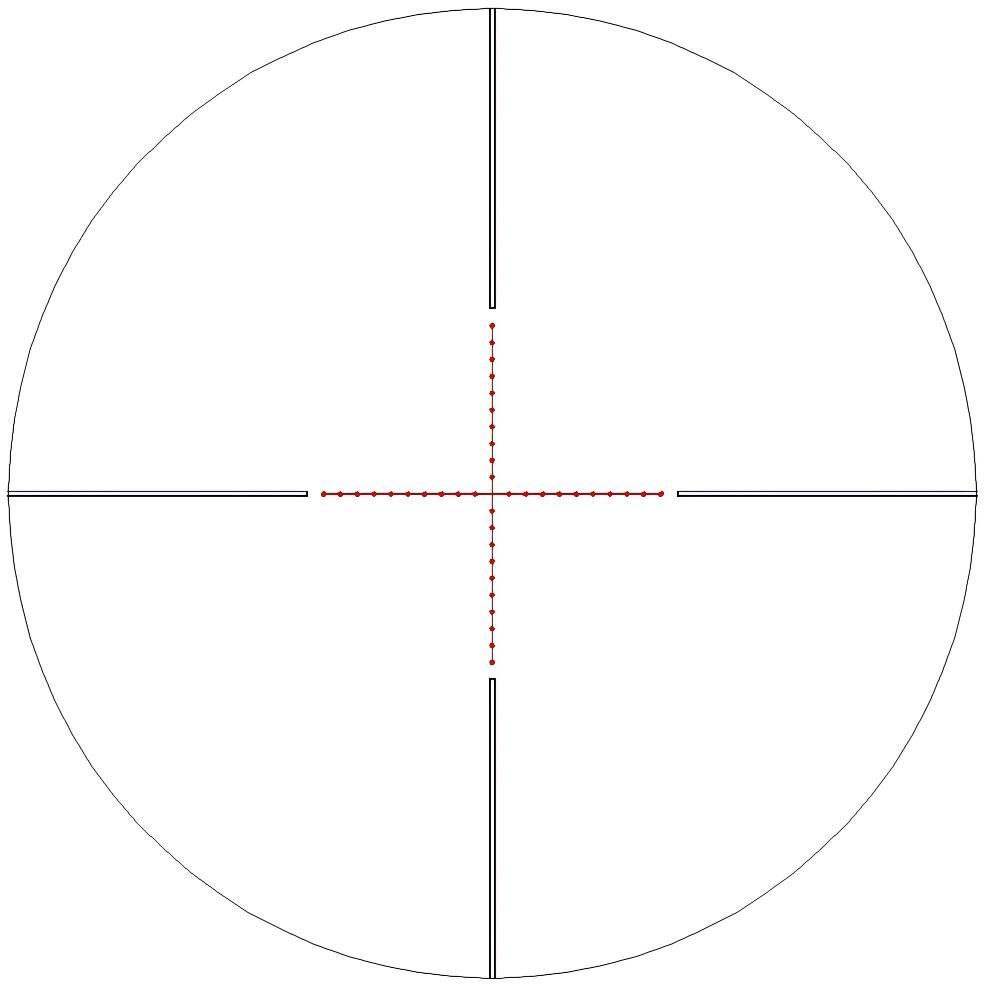MIL-DOT vs. HALF MIL-DOT Reticle: What's the Difference?
Release time:
2025-07-24

MIL-DOT vs. HALF MIL-DOT Reticle: What's the Difference?
Introduction
If you’re a hunter, marksman, or tactical shooter, you’ve likely encountered MIL-DOT and HALF MIL-DOT reticles. Understanding their differences is essential for accurate range estimation, holdovers, and windage correction.
In this article, we’ll break down how MIL-DOT and HALF MIL-DOT reticles differ, which one may be better for your needs, and include visuals to help you choose the right optic for precision shooting.
What Is a MIL-DOT Reticle?
A MIL-DOT reticle is a type of riflescope reticle that uses milradian (mil) spacing to assist with range estimation and bullet drop compensation.
- 1 MIL (milradian) = 3.6 inches at 100 yards
- Each dot is spaced 1 MIL apart (center to center)
- Popular among military and law enforcement snipers
Functionality: By measuring how many mils an object covers, shooters can calculate its distance using a simple formula:
Distance (yards) = (Target height in inches x 27.78) ÷ Mils seen
Visual Description: The reticle typically consists of dots spaced evenly along the crosshairs, with 1 MIL between each dot.
What Is a HALF MIL-DOT Reticle?
The HALF MIL-DOT reticle is an evolution of the MIL-DOT, offering additional aiming points by dividing the space between each full mil-dot into halves.
- Provides 0.5 MIL increments
- More aiming reference points for finer adjustments
- Ideal for long-range precision shooting and varmint hunting
Visual Description: The reticle looks similar to a MIL-DOT but has smaller dots or hash marks at every 0.5 MIL, providing more detailed measurements.
Key Differences Between MIL-DOT and HALF MIL-DOT
Feature | MIL-DOT | HALF MIL-DOT |
Dot Spacing | 1 MIL (3.6" at 100 yards) | 0.5 MIL (1.8" at 100 yards) |
Aiming Points | Fewer | More (twice as many) |
Precision | Adequate | Higher, especially at long range |
Learning Curve | Easier for beginners | Slightly more complex |
Best For | General use, tactical shooting | Long-range precision, hunting |
Pros and Cons
MIL-DOT
Pros:
- Simple and proven design
- Easier to learn
- Suitable for most field applications
Cons:
- Fewer hold points
- Less precise for long-range adjustments
HALF MIL-DOT
Pros:
- Greater precision
- More holdover options
- Ideal for competitive and varmint shooters
Cons:
- Can appear cluttered to new users
- Slightly steeper learning curve
Which One Should You Choose?
If you're new to long-range shooting or prefer a cleaner sight picture: MIL-DOT may be best.
If you demand ultra-precise holdovers and windage estimation: HALF MIL-DOT offers the advantage.
It also depends on your scope magnification, shooting distance, and personal preference.
Picture Guide
1. MIL-DOT Reticle Visual
A standard MIL-DOT reticle with evenly spaced dots (1 MIL apart).

2. HALF MIL-DOT Reticle Visual
precision shooting scopes
Half MIL-DOT reticle showing additional aiming points every 0.5 MIL.
Conclusion
Both MIL-DOT and HALF MIL-DOT reticles are effective tools, but their applications differ based on your shooting style and accuracy needs. Choose the one that best aligns with your experience level and target distance.
For shooters aiming for extreme accuracy, the HALF MIL-DOT reticle offers the edge. But for quick estimations and tactical use, the MIL-DOT reticle remains a solid choice.
RELATED NEWS
